

Imagine a world where every seed planted guarantees a bountiful harvest, thanks to incredible advancements in harvesting machinery. This is not a distant dream, but a revolutionary reality transforming agriculture today.
As food demand skyrockets globally, mastering the nuances of harvesting equipment is more crucial than ever. These machines are the backbone of sustainable farming, optimizing yields and minimizing waste in unprecedented ways.
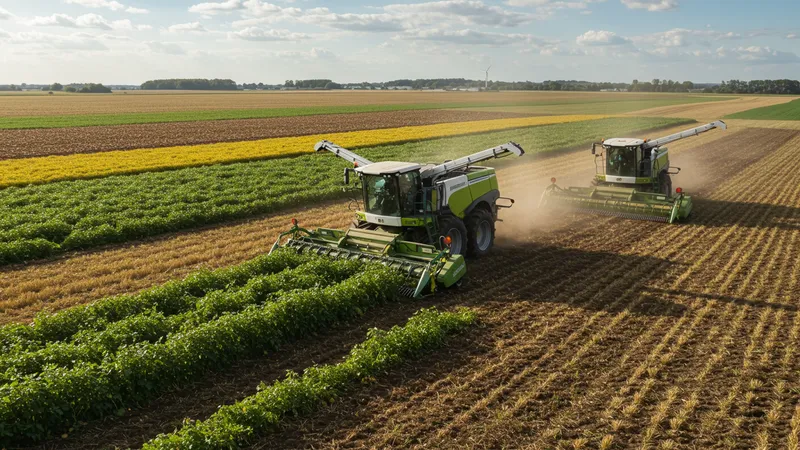
Did you know that modern combines can now detect crop types and adjust settings automatically for optimal performance? These smart machines are reducing labor while increasing efficiency like never before. But that’s not even the wildest part…
Another exciting development is the integration of IoT technology in urban farming equipment, allowing farmers to access machine performance data from anywhere in the world. This connectivity is not only revolutionizing productivity but also redefining how agricultural businesses are managed globally. However, the most fascinating feature is yet to come…
This groundbreaking transformation in harvesting machinery hasn't just gotten the attention of farmers but also intrigued technology enthusiasts. Experts are baffled by the blend of traditional methods with cutting-edge innovation. What happens next shocked even the experts…
Tracing the history of harvesting machinery presents a fascinating journey from simple hand tools to today’s sophisticated machines. Early farmers relied on sickles and scythes, which were laborious and time-consuming. In contrast, modern equipment such as combines has massively accelerated the process. What’s intriguing is how some ancient principles still guide today's technology, even if it's in more advanced forms. But there’s one more twist to this evolution...
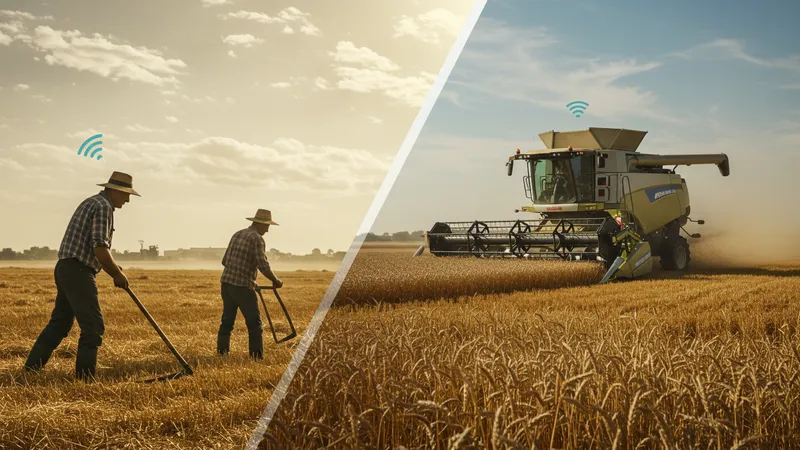
Modern harvesting machinery emphasizes not just speed but also precision. Researchers and engineers have integrated sensors that evaluate the moisture content, crop quality, and terrain, making on-the-fly adjustments. This has married traditional efficiency with technological advances. Yet, this isn’t the end of the story on how machinery revolutionizes farming.
The rise of autonomous combines is another spectacular leap. These machines are equipped with GPS, enabling them to operate without human intervention. They navigate fields, ensuring maximum yield with minimal waste. As impressive as this is, what you read next might change how you see this forever.
A lesser-known innovation is the development of harvesting drones, primarily for vineyards and orchards. These drones can identify ripeness levels using multispectral imaging to determine the perfect harvest time, thus minimizing loss. This drone revolution is merely the beginning, adding yet another layer of intrigue to agricultural technology.
The Internet of Things (IoT) has emerged as a groundbreaking trend in agriculture, streamlining operations and enhancing efficiency. By connecting machinery and sensors to the internet, farmers get real-time data insights. These insights allow farmers to make informed decisions about harvesting times and machinery maintenance. But what if I told you there's more to this technological marriage?
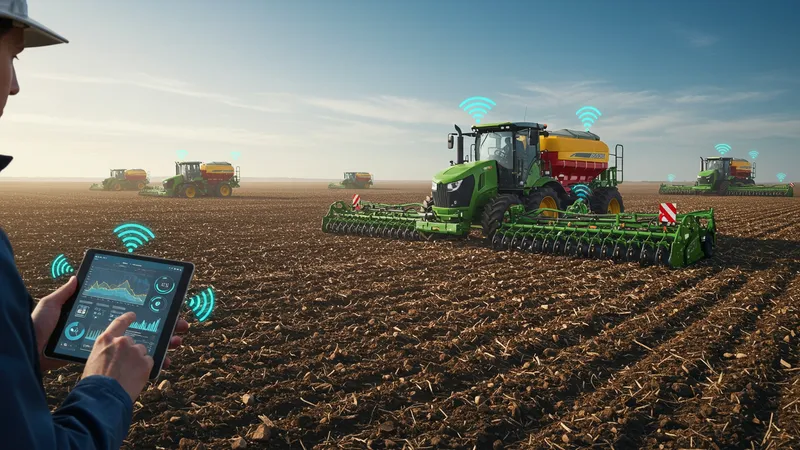
IoT has significantly improved predictive maintenance in farming machinery. Integrated sensors track equipment performance, sending alerts before potential failures occur. This predictive approach minimizes downtime and repair costs, boosting overall productivity. Yet, the integration does not stop there, promising even more fascinating developments.
The connectivity provided by IoT enables remote monitoring of field conditions. Farmers can track weather patterns, soil moisture, and crop health through dashboards available on their mobile devices. This innovation means a shift from reactive to proactive farming. However, the real breakthrough is seen in how these insights transform equipment use.
At the heart of this transformation is data aggregation. By collecting and analyzing data from various fields, farmers can optimize machinery settings universally, fine-tuning their approach for different climate conditions or crop specifications. The potential for customization is boundless, pushing agricultural efficiency to unprecedented heights.
The advent of self-driving harvesters marks a pivotal moment in agriculture, akin to the industrial revolution. These machines are equipped with AI technologies that allow them to navigate fields, recognize crop types, and harvest with precision. The result? Increased productivity with reduced labor demand. But the capabilities of these machines go beyond mere operation.
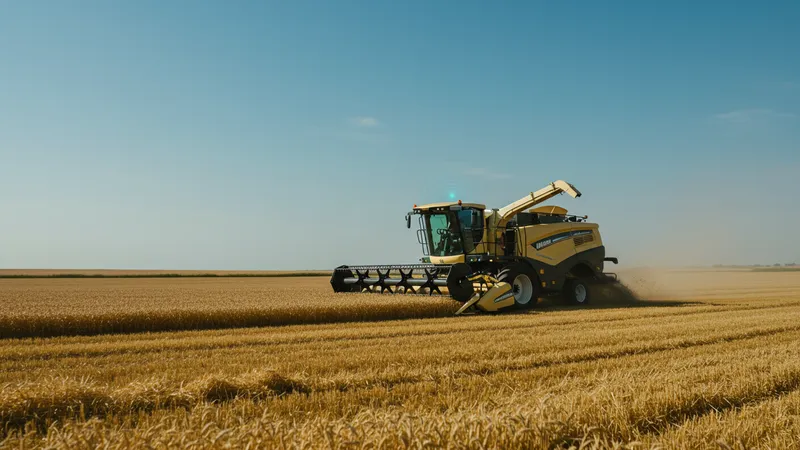
Self-driving harvesters use machine learning algorithms to improve their efficiency over time. These systems learn from past experiences, optimizing speed and technique with each successive harvest. This ability to adapt leads to more consistent crop yields. Still, their full potential has not even been tapped yet.
What is striking is how these machines are kept in sync with changing technology. Manufacturers regularly update software systems, ensuring the harvesters adapt to evolving agricultural practices and challenges. This adaptability strikes a fine balance between innovation and tradition. But the future holds even more in store for these technological marvels.
The environmental benefits of self-driving harvesters are also significant. By optimizing resource use, these machines lessen the ecological footprint of traditional farming methods. This sustainability aspect might just be the game-changer farming has been waiting for, reshaping how the world grows food.
In a quest for sustainability, renewable energy has found its way into powering harvesting machinery. Solar panels fitted on harvesters generate clean energy, reducing dependence on fossil fuels and lowering emissions. This change is not just environmentally sound but economically viable, offering a new dimension to machine efficiency.
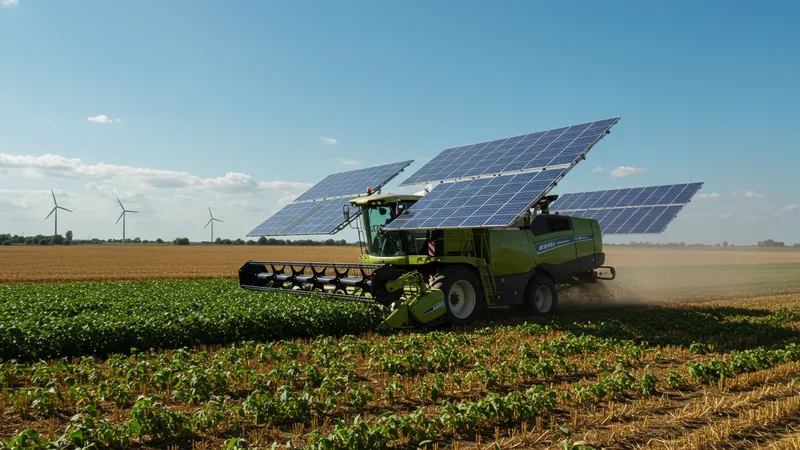
The choice of energy source impacts the overall running costs significantly, and renewable energy ensures a reduction in long-term operational expenses. This, in turn, makes farming more profitable for small-scale farmers. Yet, this transition to renewable energy sources goes beyond just cost-saving measures.
Wind energy is another exciting avenue in this area. Some harvesting machines in windy regions are experimenting with turbine technology, converting wind power into electricity. This innovation not only widens energy options but also makes way for hybrid systems. But what happens when you combine these renewable forces with existing technology?
The integration of renewable energy into harvesting machinery is a testament to holistic progress. It aligns technological advancement with environmental preservation, setting the stage for future developments in agriculture. This synergy might just pave the way for achieving food security while safeguarding our planet.
Robotics technology is disrupting traditional farming practices, offering unprecedented levels of precision and efficiency in harvesting. Robotic harvesters utilize sensors and machine vision technology to identify ripe crops accurately and gently handle them to avoid damage. But robotics aren't stopping at just identifying produce.
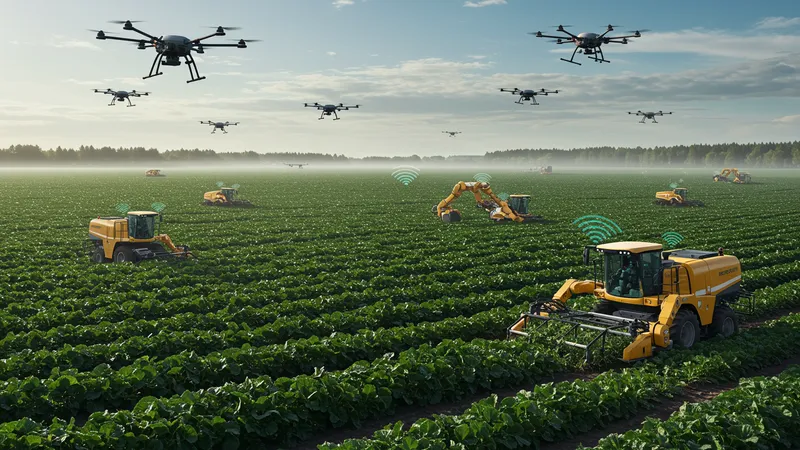
The capabilities of robotic harvesters extend to real-time decision-making, allowing them to work in tandem with other machinery on the field. They can communicate with drones and stationary systems, forming an interconnected web of productivity. This orchestrated symphony is just the beginning of what robotics can bring to agriculture.
Farmers have started witnessing tangible benefits from robotic harvesting systems, notably in reducing labor costs and increasing harvest speed. These advantages point toward robotics setting new benchmarks for productivity. Yet, there’s even more promise in what's coming next.
Robots are being designed to operate under a variety of environmental conditions without human oversight. Equipped with robust AI, these systems adapt to unexpected challenges, such as sudden weather changes or mechanical issues. This resilience transforms robots into indispensable assets for future farming operations.
Precision agriculture has fundamentally redefined how we utilize machinery in farming, focusing on maximizing efficiency while minimizing waste. This approach incorporates GPS and IoT technologies to provide data-driven insights, allowing for precise application of resources such as water and fertilizers. What’s compelling is the extent of its efficiency improvements.
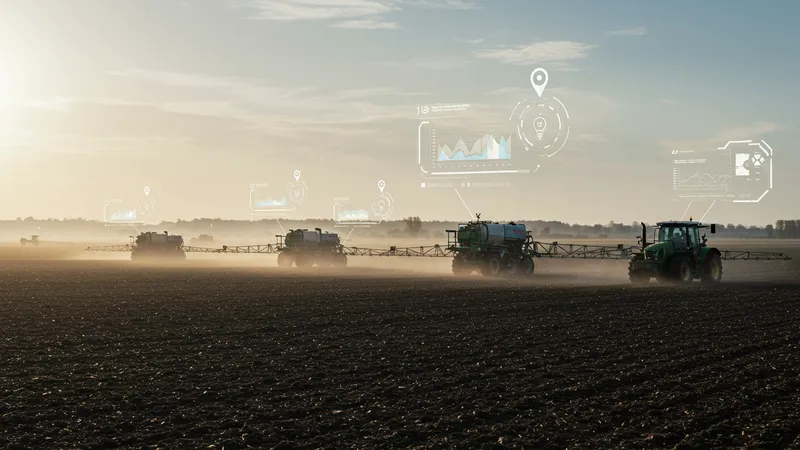
By employing precision agriculture techniques, farmers can achieve optimal plant growth while conserving resources. Machines calibrated to precise specifications enhance yields by applying exact quantities, ensuring no input goes to waste. However, the benefits extend far beyond mere resource conservation.
Additionally, precision agriculture allows for detailed monitoring of crop health through aerial surveys conducted by drones. This constant surveillance acts as an early warning system for potential issues, reducing the likelihood of crop failures. But it’s not just about avoidance; there are more proactive advantages to explore.
The real game-changer lies in the capability to create data models that predict future outcomes based on current data analysis. These models help in strategizing planting routines and harvesting schedules, leading to an increased success rate year over year. Precision agriculture, indeed, merges data science and farming with surprising results.
Sustainable farming practices are gaining traction worldwide, and harvesting methods are central to this paradigm shift. Techniques such as minimal tillage and organic farming are reshaping the landscape. These sustainable methods reduce soil erosion and depletion, maintaining ecological balance.
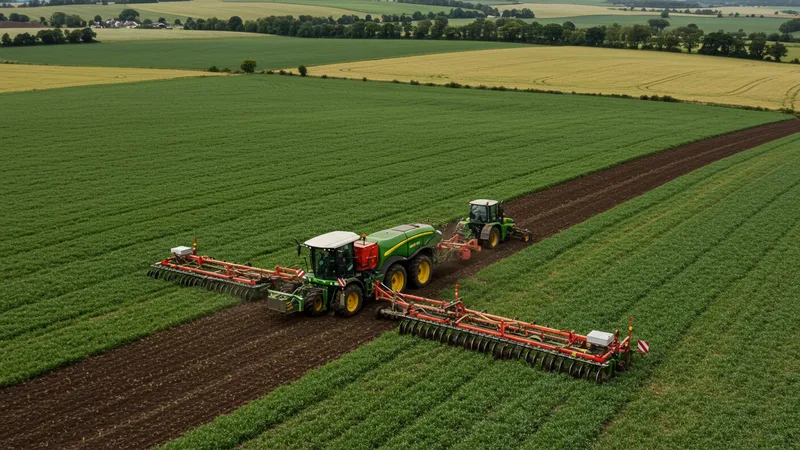
The adoption of sustainable harvesting techniques is driving forward innovations in machinery design. As new machines are developed, they focus on minimizing environmental impact, ensuring that sustainability is a top priority. These new designs are not just trendy but crucial for the future of agriculture.
Promoting soil health is essential, realized through techniques that prevent nutrient depletion. Harvesting machinery designed with ecological considerations ensures that the soil retains its fertility. But sustainable techniques don't end there—they enhance the biodiversity of fields in diverse ways.
One such benefit is crop diversity, cultivated through machinery adapted to a variety of crops. This diversity lessens the impact of pest infestations and diseases, leading to healthier, more resilient crops. Ultimately, these sustainable practices and innovations ensure a flourishing ecosystem while feeding the planet.
Modern grain collection techniques have evolved beyond traditional storage methods. Utilizing machinery for efficient collection and preservation, these innovations focus on reducing loss post-harvest. This translates to maximizing profits by minimizing waste, a crucial aspect given today's global food demands.
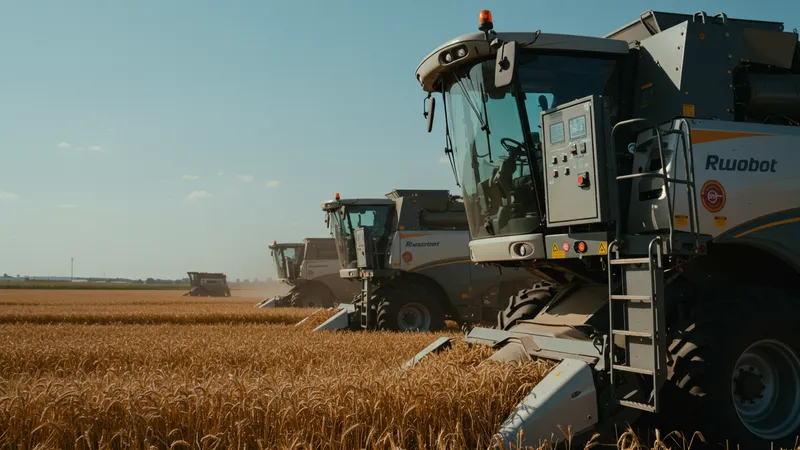
More advanced collection machinery includes features like temperature control and humidity regulation, ensuring optimal storage conditions. These intelligent machines preserve grain quality until it reaches market, providing a competitive edge to farmers who adapt to these technologies top quickly.
Mechanized collection techniques have also enabled quicker turnaround times. Instead of waiting for field labor, once-harvested grain is swiftly transported into storage. But the quest for efficiency has driven these innovations even further.
By employing predictive analytics, farmers can forecast storage capacity and movement requirements. This proactive approach means less time spent on logistics and more on enhancing productivity. Grain collection technology, therefore, represents not just improved equipment but a fundamental strategic shift in agricultural management.
Artificial Intelligence (AI) is transforming agricultural machinery by enhancing decision-making processes and increasing productivity. Intelligent algorithms within harvesting machines analyze field data and optimize routes, ensuring maximum yield with minimal fuel consumption.
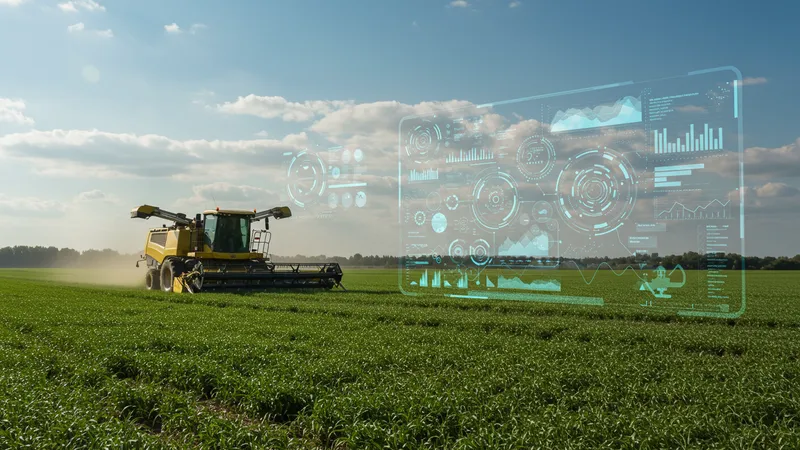
AI in agriculture extends beyond mere analysis; it predicts growth patterns and yields outcomes, helping farmers plan proactively. Machines equipped with AI identify potential issues before they arise, allowing preemptive action that drastically reduces crop mortality rates.
Moreover, AI has enabled unprecedented levels of customization. Machines adapt to different terrains and crop types seamlessly, making it possible for farmers to cater to specific environmental conditions efficiently.
But AI isn't operating in isolation. Integrated with IoT and robotics, AI creates more efficient operations, informed by a plethora of real-time data. This melange of technologies could redefine agricultural practice, paving the way for a future of heightened productivity and sustainability.
Data analytics is taking center stage in next-level farming, with modern machinery benefiting immensely from data-driven insights. The practice involves collecting vast amounts of data from fields, including weather patterns, soil conditions, and machinery performance.
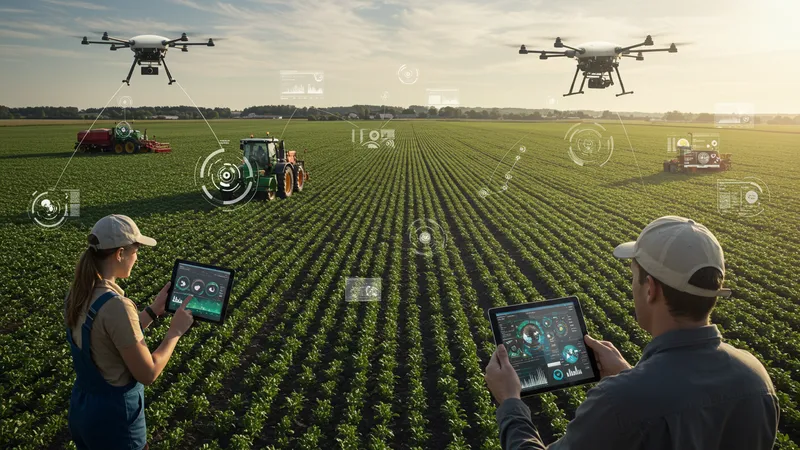
This data becomes indispensable in guiding decisions about optimal planting and harvesting times. As such, farmers are no longer reliant solely on experience or intuition—the data provides conclusive insights that optimize decision-making processes.
The concentrated use of data analytics has led to improved yield accuracy, allowing farmers to meet market demands with precision. This increased predictability attempts a formidable advancement in agricultural strategy.
Implementing data analytics also instigates a culture of continuous improvement, with feedback loops constantly informing operational adjustments. This cycle significantly boosts effectiveness and efficiency in all aspects of farming, signaling a shift toward more scientific methods in agriculture.
Modern harvesting machines are breaking barriers when it comes to energy efficiency. Engineers are consciously designing engines that minimize fuel consumption without compromising on performance. These engines pave the way for a new era of sustainable harvesting operations.
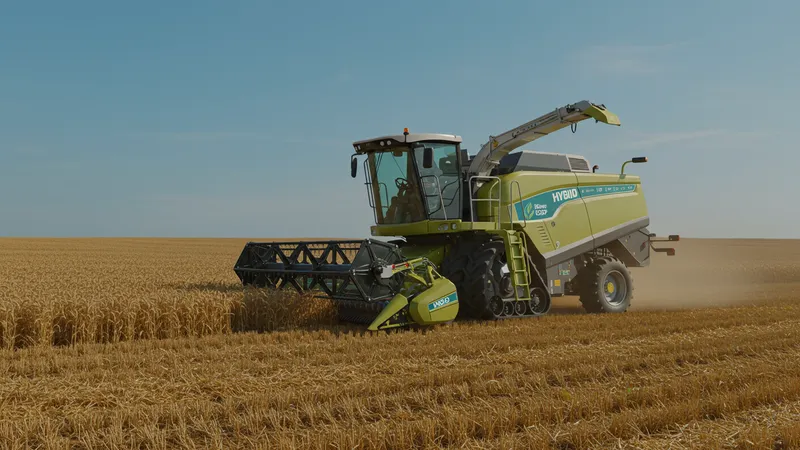
A key factor in achieving this efficiency is the introduction of hybrid engines. These systems combine traditional fuel sources with electric or biofuel alternatives, reducing reliance on fossil fuels and lowering the carbon footprint of every harvest.
Harvesters today are equipped with energy recuperation systems that convert kinetic energy into electrical power, which then fuels secondary functions or aids in powering up auxiliary components. This innovation highlights a keen awareness of energy conservation necessities.
A machine's ability to recalibrate itself during operations reflects astute advancements in agricultural engineering. As an engine adapts to changing field conditions, it maximizes energy utilization—ensuring optimum function while adhering to sustainability goals.
Automation entails both challenges and opportunities. Harvesting systems that streamline labor processes stand out, offering automation features that convert traditional labor-intensive operations into seamless, efficient tasks. This transformation significantly reduces the need for repetitive manual work.
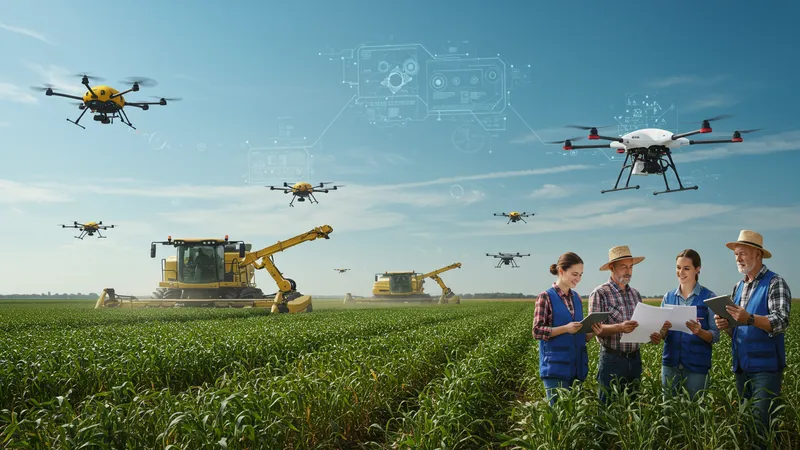
What’s compelling is the socioeconomic impact. Automation liberates human resources, allowing labor to focus on more complex, technical roles in agricultural management. However, this shift requires a skilled workforce, heralding new educational and vocational demands.
Moreover, automation systems improve consistency and quality in harvesting. Automated precision means harvesters work with unparalleled accuracy, reducing waste generated by human error. These improvements lend a substantial competitive advantage in agribusiness.
However, automated systems face their own set of challenges, mainly in integration and adaptability to existing setups. Flexible technology that can seamlessly merge with current operations holds the key to achieving a balance between human labor and machine work efficiency.
Agriculture drones represent a striking intersection of aviation technology and farming. These high-tech devices offer aerial views of fields, identifying growth patterns or anomalies undetectable at ground level. This superior visibility expands a farmer’s command over their land.
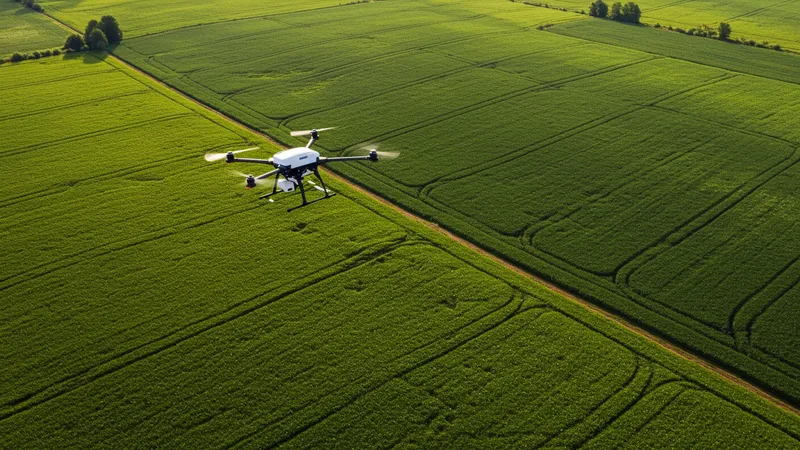
Drones excel in collecting real-time data for precision agriculture. Equipped with multispectral sensors, these flying devices evaluate crop vegetative health, detect pest infestations, and monitor irrigation needs. Such information is invaluable for formulating targeted interventions.
An exciting application of drones lies in their ability to predict disease outbreaks by analyzing plant tissue health markers. This forecasting empowers farmers to counteract threats proactively, safeguarding the season's harvest. But drones offer even more intriguing potentials.
Using drone data, farmers can optimize flight paths for automated sprays or seed dropping, ensuring minimal wastage of resources. The efficiency multiplier effect grants a competitive edge, propelling agricultural productivity into a new era of technological sophistication.
Hybrid machinery is leading the frontier of versatile agricultural tools. By combining capabilities of multiple machines, these hybrids cater to diverse farming needs, enhancing operational flexibility. This innovation fosters resource efficiency and opens up new possibilities in farm operations.

Such versatility ensures these machines are equipped for various tasks—be it plowing, planting, or harvesting—reducing the need for multiple separate units. This multifunctionality benefits smaller farms with limited budgets, revolutionizing their operational logistics.
Another key advantage of hybrid machinery is the reduction in transition times between different tasks. A single piece of equipment can switch roles seamlessly, boosting productivity and reducing downtime in fields.
The development of these machines is not without challenges, notably in design complexity and cost. However, as technology progresses, solutions are unfolding to streamline hybrid systems, setting the stage for more robust and economically favorable agricultural machinery.
The future of harvesting machinery heralds exciting prospects, with continual developments fueling optimism. Monitoring progress in these advancements provides valuable insights for stakeholders across the agricultural industry. With technology at its core, the road ahead is paved with innovation.
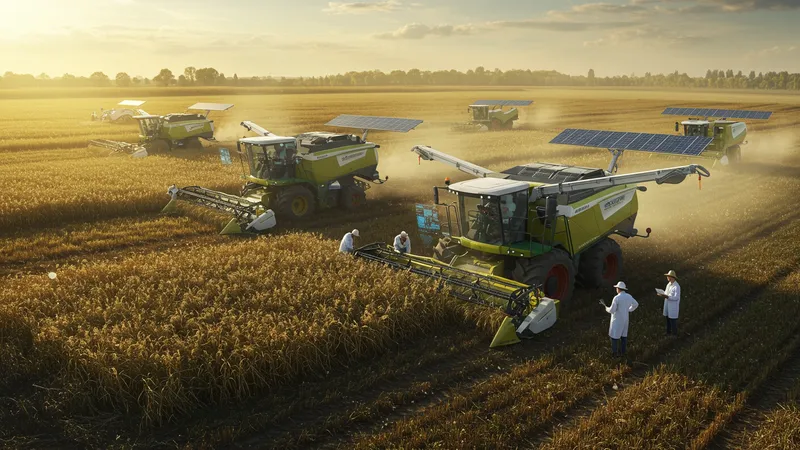
R&D is in constant evolution, focusing on refining existing technologies while pioneering new pathways. Sustainable practices, efficiency, and adaptability remain central to ongoing projects, ensuring that future solutions not only address present needs but also anticipate tomorrow's challenges.
Visionaries are forecasting revolutionary machinery that not only copies but also enhances natural processes. Machines may soon simulate ecological cycles, blending seamlessly into environmental contexts and maintaining biodiversity as they operate.
Agricultural machinery's trajectory is aligned with global sustainability goals, aiming to balance food production demands with ecological preservation. Each new development elaborates this narrative further, weaving a compelling story of agriculture's inevitable transformation.
Understanding harvesting machinery isn't just about machines—it's about reshaping our interactions with the land, our food, and our future. As we stand on the cusp of an agricultural revolution, sharing and spreading awareness of these advancements are crucial. Bookmark this journey, share the knowledge, and take part in shaping the future of food.